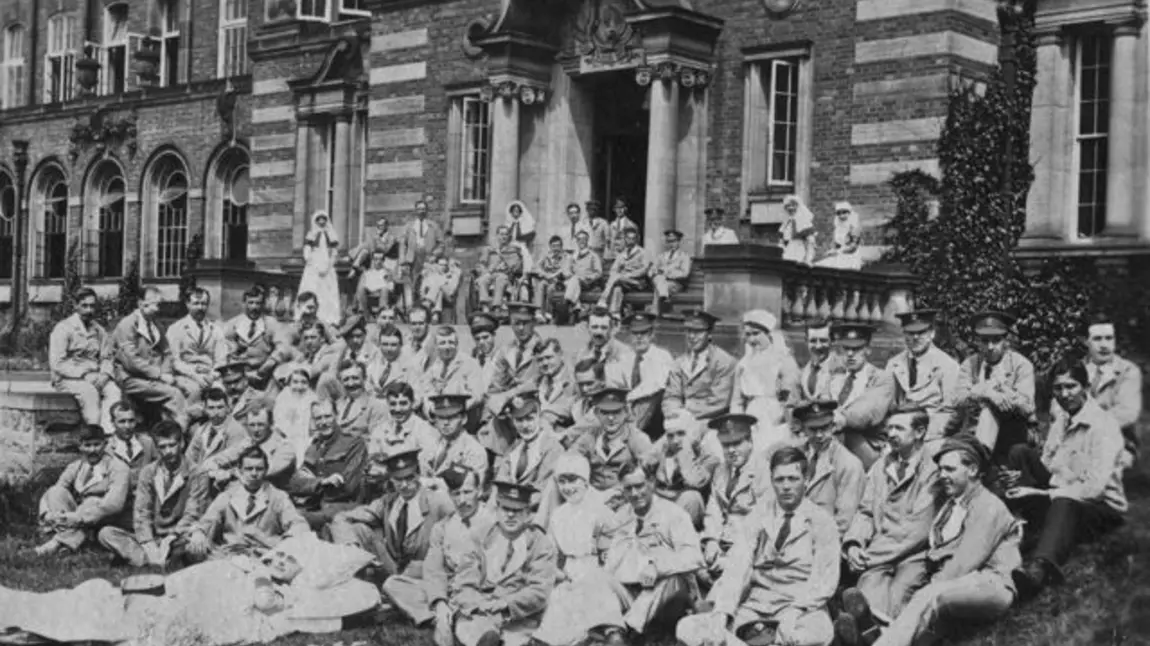The untapped stories of disability and the First World War

By the end of the First World War, almost one million British combatants had died, but a further two million returned home with some level of permanent disability. Over 40,000 had survived the amputation of one or more limbs, whilst some had received head wounds leading to facial disfigurement or blindness.
Less visible wounds included deafness, lung damage from gas attacks, tuberculosis contracted in the trenches, or the effects of 'shell shock' (better known today as post-traumatic stress disorder).
Much of the study of war disability at this period has focussed on the medical aspects of treatment and rehabilitation, for example, the Science Museum’s History of Medicine collection but what was the wider impact on life in Britain?
For the many thousands of men who emerged into civilian life with war disabilities - mainly young with most of their lives before them - what was the future? Where were they to live and how could they support themselves and their families? There are a huge number of stories to be uncovered, both local and national.
For the majority of disabled veterans there was an urgent need to provide independent living – suitable homes and the chance to earn a living for their families. Established Forces charities were supplemented by a whole range of new organisations at local and national level aiming to help disabled veterans. St Dunstan’s (now Blind Veterans UK ) and the Douglas Haig Memorial Homes Trust (now Haig Housing Trust ) are amongst the best known today but there were hundreds of local 'war charities' whose records could be investigated.
The health benefits of clean and peaceful rural settings for disabled veterans were promoted by several veterans’ housing charities and families were encouraged to grow their own food in gardens or allotments. The Scottish Veterans’ Garden City Association founded in 1915 was amongst the pioneers of this approach but a number of semi-rural housing developments for disabled veterans can be found on the edges of many towns in England too, often with a strong link to the local regiment.
How were disabled veterans to support themselves? Some housing developments included sheltered workshops. The Thermega workshops at Leatherhead, made electric blankets while the Painted Fabric Company in Sheffield, trained disabled men to produce painted silk fabrics. Ashstead Potters Ltd in Surrey trained 40 disabled men to make art deco pottery and, of course, the Poppy Factory at Richmond Hill in London is still active today.
Veterans were not the passive recipients of charity. They organised themselves into a number of campaigning groups to improve their situation after the war. Many of these later came together to become what is now the Royal British Legion. Some of the most active campaigners were disabled men like Major Sir Benn Jack Brunel Cohen KBE, wounded at the Third Battle of Ypres in 1917, who had both legs amputated and went on to gain the parliamentary seat of Liverpool Fairfield in 1918 to promote the needs of disabled veterans.
When oral history recording became widespread in the 1970s and 80s, the memories of many veterans of the First World War and their families were recorded. Disability history was not so recognised at that time and interviewers did not always pick up on the significance of what they were capturing. There is a wealth of material which could be reviewed now, as well as photographic collections, local newspapers and charity archives.
Whether it is tracking down a local housing estate for veterans, bringing to life the records of a local rehabilitation centre, veterans’ organisation or pensions board, investigating a museum collection or archive – this is a history that speaks to us all.By helping to facilitate community engagement with the First World War through funded projects, HLF have helped to increase our understanding of historical events during these Centenary years. The Fund has now made a further £4million available for local commutities to explore First World War heritage. Find out how you can get involved with the First World War: then and now programme.